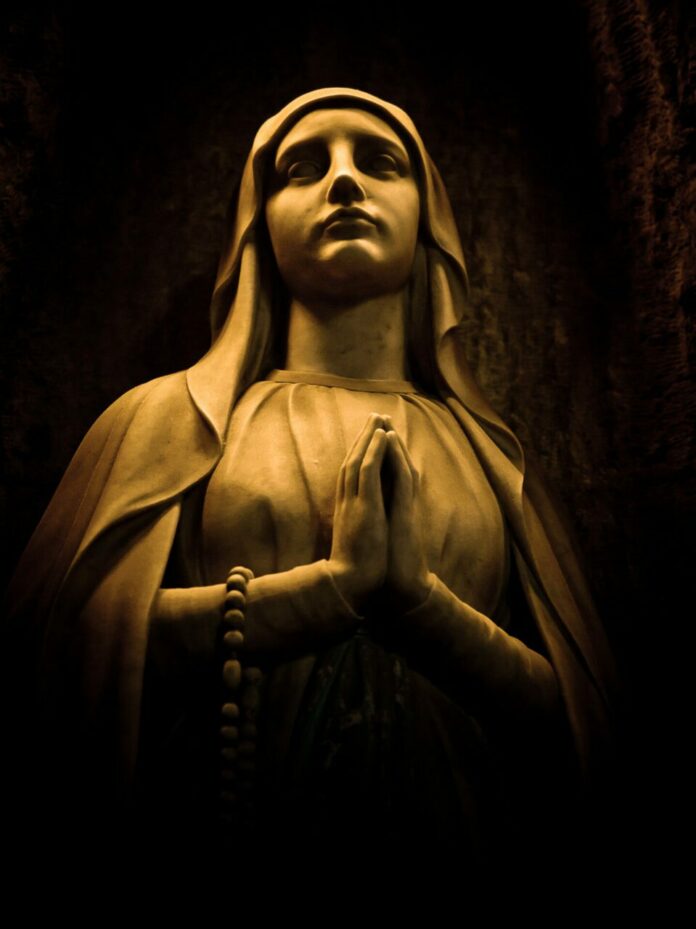Does holiness in the eyes of the church depend, among other things, on virginity and subservience – the inclination not to indulgence in sexual activities – especially if you are a woman?
Did, through the creation of the Virgin Birth myth of the figure of Mary, the masculine church seek to deprive women of their humanity by de-sexualising and putting a stain of “sinfulness” on normal sexual activity – and sending a message that “both the body and the sexuality of a woman were evil” as a result?
To further dehumanise the figure of the Virgin Mary, latter-day scholarship charged that the male-dominated church hierarchy “went through intellectual gymnastics to prove that the hymen of the Virgin Mary had not been raptured even during Jesus’ birth”.
At the beginning of the second century of the Common Era (CE, an equivalent of Anno Domini or AD), the church further dehumanised Mary’s person, spreading the most bizarre stories that he could have been “born out of his mother’s ears” – a ploy by the church to prove the Virgin birth was of God, and did not come because of the normal biological birth – with sexual intercourse being one of the agents of human birth.
More than 1 3 74 years ago in 649 CE, the Lateran Council held in Rome declared that Jesus was conceived “without seed”. The implication of this was to heighten and bolster the notion of Virgin Birth, an attribute that belonged to Mary, the mother of God, or Jesus.
The Lateran councils were ecclesiastical synods of the Catholic church which took place in the Lateran Palace near the Lateran Basilica – and dogmatically held all authority for what the church did or did not do.
The Second Council of Constantinople of 553-554 CE referred to Mary as “ever virgin” as did the early Christian tradition of the Church Fathers which, in addition of referring to Mary as “ever virgin”, also saw her as “perpetual virgin without controversy”.
To be “conceived without seed” implies that Mary’s conception of Jesus did not entail sexual intercourse, an idea that contradicts all normal human births as biologically determined.
An interesting fact in the story of the Virgin Birth is that, according to the gospel writer of Matthew 1.18-19, Mary was pregnant before she and Joseph had sex – a further attempt to deny her humanity.
Other scriptural assertion (Matthew 12.46, Luke 8.19, and Mark 3.32) in strange and contradictory ways, declare that Jesus had brothers and sisters.
How can Mary’s virginal birth be factually true, or immaculately conceived, if Jesus had brothers and sisters? Certainly, this would render nonsensical the notion of Mary’s Virgin Birth, if we accept, as we should, that Mary had previously given birth to Jesus’ “brothers and sisters”, at least if the gospel writers’ accounts must be taken seriously.
But what would have motivated the church fathers to have declared the birth of Jesus as a birth “without seed?”
Could it have been related to the sanctity of celibate life? Could there have been other compelling reasons? Could it be related to church dogma and church teaching?
But what does modern-day Biblical scholarship have to say about the “Mary story”?
John Shelby Spong, the Episcopal bishop who died two years ago, and the writer of the best-selling books, Rescuing the Bible from Fundamentalism and Resurrection: Myth or Reality, argues that the work of “de-sexing” and “de-humanising” Mary is the work of “a condescending patriarchal hierarchy”, controlled by the male-controlled church, clergy and bishops – an outcome of the teachings of the so-called “church fathers”.
“The clear message was that both the body and the sexuality of a woman were evil. The ideal woman was not a flesh and blood woman, but sweet, passive, docile, compliant, obedient, virginal, and unreal – and the Christian church today is still one of the most sexist institutions…”
So, if all this is true, as many scholars believe it to be true, we can come to conclude, as Spong and others did, that the Virgin Birth of Mary does not exist, but is a mythological figure and a creation of the church, and that in fact “the Virgin Mary never lived”.
Spong concludes that the Virgin Mary is a mythological figure, and the church’s existence for its continuation is not depended on mythologies.
But more troubling, the Virgin birth myth has for centuries perpetuated inferior stereotypes and docility of women that also dehumanises them.
• Mdhlela is an Anglican priest, a freelance journalist, ex-trade unionist and former editor of the SA Human Rights Commission journals
Follow @SundayWorldZA on Twitter and @sundayworldza on Instagram, or like our Facebook Page, Sunday World, by clicking here for the latest breaking news in South Africa.



